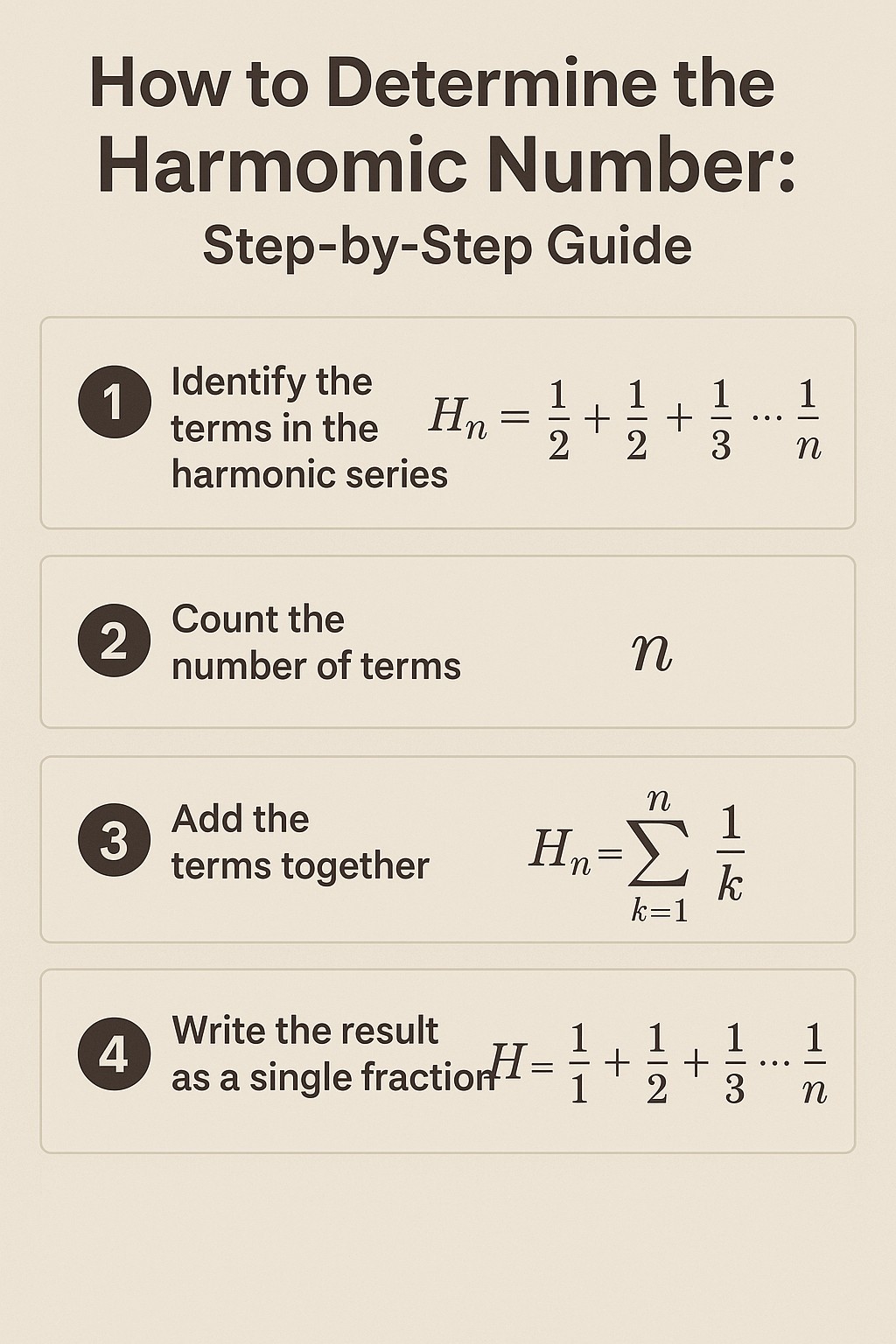What is a Harmonic Number?
A Harmonic Number is the sum of the reciprocals of the first 'n' positive integers. It represents a partial sum of the infinite harmonic series. This section explains the fundamental formula and its relationship to the series.

The Formula
The n-th harmonic number, denoted as Hn, is defined by the summation:
This means Hn = 1 + 1/2 + 1/3 + ... + 1/n.
Example: Calculating H4
To find the 4th harmonic number, we sum the first four terms:
Finding a common denominator (12):
H4 ≈ 2.0833
Interactive Calculator
Find the harmonic number for any positive integer 'n'. Enter a value below to see the full summation and the result. This calculation will also update the growth chart in the next section.
Your result will be displayed here.
Summation for H:
Result:
Growth & Behavior
Harmonic numbers grow slowly, diverging towards infinity at a logarithmic rate. This chart visualizes the growth of Hn as 'n' increases. It's linked to the calculator above—your calculations will appear on the chart.
For large n, Hn can be approximated by ln(n) + γ, where γ is the Euler-Mascheroni constant (~0.577).
Where Are Harmonic Numbers Used?
Beyond pure mathematics, harmonic numbers appear in various fields, especially in the analysis of algorithms and probability problems. Here are some key areas where they provide crucial insights.
Computer Science
They are fundamental in analyzing algorithms. For instance, the average number of comparisons in Quicksort is related to Hn. They also feature in caching and hashing analyses.
Probability Theory
The "Coupon Collector's Problem" is a classic example. The expected number of trials needed to collect all 'n' unique coupons is approximately n * Hn.
Number Theory
Harmonic numbers are connected to the Riemann zeta function and other important mathematical constants and series, helping to explore the properties of prime numbers.
Combinatorics
They appear in formulas related to counting permutations and combinations, as well as in the analysis of data structures like random search trees.
Physics & Engineering
Harmonic series concepts are related to phenomena in acoustics (harmonics in music), signal processing, and analyzing certain types of electrical circuits.
Population Genetics
In some models, harmonic numbers are used to calculate the average age of a neutral mutation in a population, providing insights into genetic diversity and evolution.